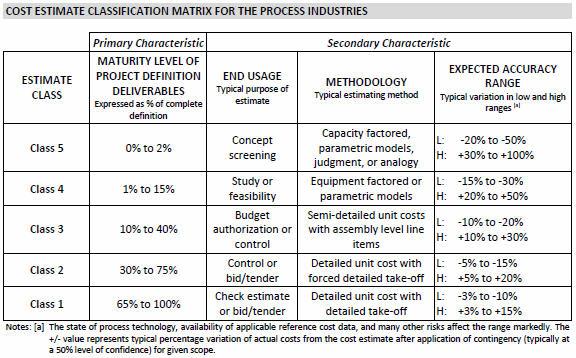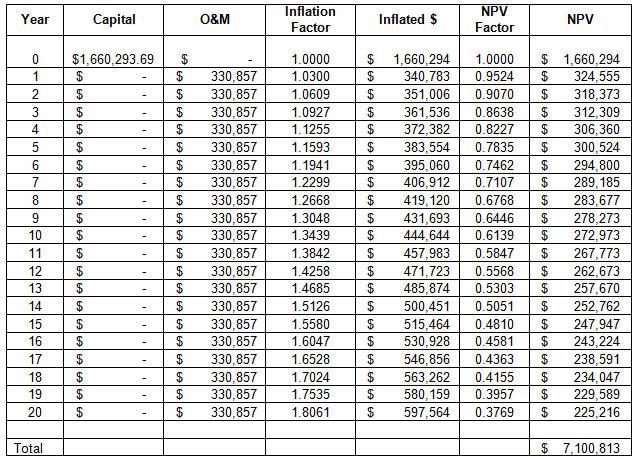Industrial Water Treatment For Inorganic Contaminants: Treatment Costs

By Mark Reinsel, Apex Engineering
This article is the seventh in a series on industrial water treatment focusing on inorganic contaminants; this one will discuss capital, operating, and lifecycle costs. While regulatory limits are being established (see Part 1), the process of identifying a cost-effective treatment process should be undertaken (Part 2). Potential water treatment processes for inorganic contaminants can be grouped into three categories: physical (Part 3), chemical (Part 4), and biological (Part 5). Emerging technologies were covered in another article (Part 6).
Typical contaminants of concern in industrial waters include suspended metals, dissolved metals and other solids, nitrate, sulfate, and cyanide. Common metals and metalloids include arsenic, antimony, selenium, lead, copper, cadmium, and zinc.
This article will review:
- Cost considerations
- Capital costs
- Operating costs
- Lifecycle costs
- Cost examples
Cost Considerations
A lifecycle cost comparison of alternative technologies is critical in selecting a treatment process for a particular project. That cost comparison will include initial costs (capital costs), operating costs (labor, chemicals, power, maintenance), and future equipment costs (capital costs for upgrades or replacement).
As effluent concentration requirements fall, treatment costs rise, as it is typically more complex to meet lower discharge requirements. For example, hydroxide precipitation can meet relatively high metals limits, while hydroxide precipitation plus sulfide precipitation (which would increase both capital and operating costs) may be required to meet lower metals concentrations. In another example, ion exchange regeneration will be less frequent to meet higher effluent limits. More frequent regeneration would increase operating costs.
As flow rates increase, both capital and operating costs increase. The capital cost increase will be less than linear due to the economy-of-scale effect. A rule of thumb is to use an exponent of 0.6 when scaling up; this means that doubling the design flow rate increases the capital cost by 52 percent (2^0.6). Operating costs will generally increase linearly with flow rate except for labor requirements, which again benefit from an economy of scale. To reduce costs, look for opportunities to decrease flow, such as upstream bypass or simplified sidestream treatment.
Water treatment is simply a matter of separating and concentrating. Costs associated with managing constituents in their final form (e.g., sludge or brine) must be considered.
When applying cost analyses found in case studies or similar projects to a particular project, one must account for differences in:
- Raw water chemistry
- Effluent requirements
- Flow rate
- Labor, chemical, and power costs
- Proximity to equipment suppliers/manufacturers
- Availability of trained operators
When developing cost estimates, varying degrees of accuracy (e.g., +/- 50 percent, +/- 10 percent) are determined by the stage of project development. Various organizations (e.g., ASTM, AIChE, AACE International — shown below) publish cost estimating guidelines. Consultants should consider that many companies use their own costing guidelines.

Other costs from the literature (e.g., U.S. EPA reports) should be used with caution and only as a last resort. It has been my experience that those estimates of capital and O&M costs are much higher than would be realistically encountered. Here is an example of what I consider to be inflated treatment cost estimates:
COSTS FOR 1-MGD (694 GPM) SYSTEM

*From "Reference Guide to Treatment Technologies for Mining-Influenced Water" (EPA, 2014)
Capital Costs
Capital costs are based on the design flow rate, generally the maximum flow that the facility is expected to see. Capital costs include many factors beyond just equipment. A total cost estimate will typically include:
- Process equipment
- Equipment installation
- Instrumentation and controls
- Piping, valves, and fittings
- Electrical and lighting
- Buildings and services
- Land and site work
- Utilities and service facilities
- Engineering, design, and management
- Construction expenses and fees
- Contingencies
The equipment cost may comprise as little as 20 to 25 percent of the total capital cost. In other words, the total capital cost may be 4 to 5 times the equipment cost estimate.
Operating Costs
Operating costs will include:
- Labor for trained operators
- Labor for maintenance personnel
- Chemicals
- Power for pumps, motors, lighting, etc.

Capital and operating cost estimates were developed for ion exchange (the selected process) and other technologies at the Buckhorn Mountain Mine in Washington.
Lifecycle Costs
Lifecycle costs comprise:
- Initial capital costs
- Annual operating and maintenance (O&M) costs
- Future capital costs (equipment upgrades or replacement)
Lifecycle costs typically consider the time value of money for future expenditures (annual O&M, future capital costs). An inflation rate is typically applied to estimate future costs. A discount rate is then applied to future costs to create a net present value. Relatively simple spreadsheets or software are utilized to create a single net present value (NPV) or present worth of treatment costs for a given period of time. NPVs for alternative technologies can then be compared to determine the most cost-effective water treatment system. Here is an example of NPV calculations using a 3 percent inflation rate and 5 percent discount rate over a 20-year project lifetime:

Cost Examples
Apex Engineering has developed many cost estimates over the years to allow clients to select the most cost-effective treatment process. Here is a sample of cost estimates developed for selected mine water treatment projects:

For more information, contact Mark Reinsel at http://apexengineering.us/.
